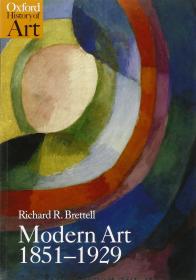
Modern Art 1851-1929 进口艺术 现代艺术1851-1929
关于作者理查德·r·布雷特尔(Richard R. Brettell),达拉斯博物馆前馆长,目前是世界各地博物馆的独立顾问。
¥ 178 8.5折 ¥ 210 九五品
仅1件
作者Brettell Richard
出版社Oxford University
ISBN9780192842206
出版时间1990-01
印刷时间1990-01
印数1千册
装帧平装
开本32开
纸张轻型纸
页数272页
字数1千字
定价210元
上书时间2023-08-31
- 在售商品 暂无
- 平均发货时间 21小时
- 好评率 暂无
- 店主推荐
- 最新上架
商品详情
- 品相描述:九五品
- 商品描述
-
●产品信息——
ASIN : 019284220X
出版社 : Oxford University Press; 第 1st 版 (1999年7月22日)
语言 : 英语
平装 : 272页
ISBN-10 : 9780192842206
ISBN-13 : 978-0192842206
商品重量 : 642 g
尺寸 : 23.88 x 16.81 x 1.7 cm
页面参数仅供参考,具体以实物为准
●内容简介——
理查德.R.布雷特尔(Richard R.Brettell)富有创意、插图精美的作品探讨了莫奈、高更、毕加索和达利等艺术家的作品,以及一些鲜为人知的人物的作品,这些作品与博物馆的扩张、殖民主义、民族主义和国际主义以及博物馆的兴起有关。从
1851年,布雷特尔在伦敦举办了一场伟大的展览,展示了欧洲先锋派的发展历程:现实主义者、印象主义者、后印象主义者、象征主义者、立体主义者和超现实主义者。本书关注不断变化的社会、经济和政治气候,重点关注现代艺术发展的条件,如城市资本主义、现代性,以及艺术博物馆、临时展览、平版印刷和摄影所提供的易于获取的图像。布雷特尔研究了艺术家对现代主义的反应,包括在表现、视觉和“艺术”方面的变化看不见。“这本书结合了新的学术成果和140幅插图——75幅全彩插图——记录了艺术和图像本身的变化,从裸体人体形态的新表现的图像学,到“没有‘主题’的艺术”的反图像学:山水画、文本和图像,和抽象。
Richard R. Brettell's innovative and beautifully-illustrated account explores the works of artists such as Monet, Gauguin, Picasso, and Dali--as well as lesser-known figures--in relation to expansion, colonialism, nationalism and internationalism, and the rise of the museum. Beginning with The Great Exhibition of 1851 in London, Brettell follows the development of the major European avant-garde groups: the Realists, Impressionists, Post-Impressionists, Symbolists, Cubists, and Surrealists. Giving attention to the changing social, economic, and political climate, the book focuses on conditions for the development of modern art such as urban capitalism, modernity, and the accessible image made possible by art museums, temporary exhibitions, lithography, and photography. Brettell examines artists' responses to modernism, including changes in representation, vision, and "the art of seeing." Combining the most recent scholarship with 140 illustrations--75 in full color--the book chronicles the change in art and image itself, from the iconology of new representations of the nude human form to the anti-iconography of "art without 'subject'": landscape painting, text and image, and abstraction.
相关推荐
-

Modern Art 1851-1929 进口艺术 现代艺术1851-1929
八品长沙
¥ 168.00
-

Modern Art 1851-1929 进口艺术 现代艺术1851-1929 Oxford University
九五品吉安
¥ 193.60
-

Modern Art 1870-2000
九五品保定
¥ 450.00
-

christie's london modern british art-evening sale 19 november 2018
九品衡水
¥ 50.00
-
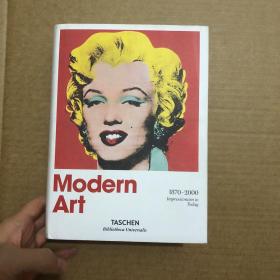
modern art 1870-2000 精装
九品上海
¥ 260.00
-

MODERN CHINESE AVANT-GARDE ART
九品保定
¥ 23.00
-

MODERN ART EST-OUEST AUCTIONS
九品北京
¥ 65.00
-

Modern Art: Impressionism to Post-Modernism
九品北京
¥ 168.60
-
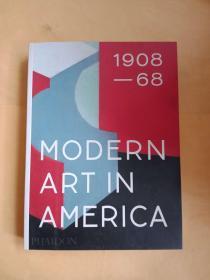
Modern Art In America 1908-68
九品北京
¥ 350.00
-

Modern Art The Decisive Years1884-1914
八五品周口
¥ 220.00
— 没有更多了 —











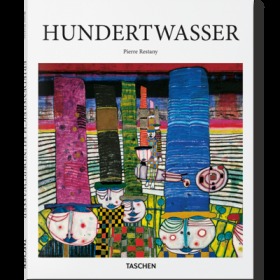

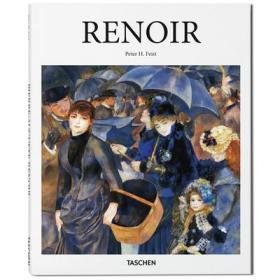
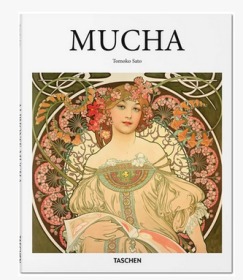












以下为对购买帮助不大的评价